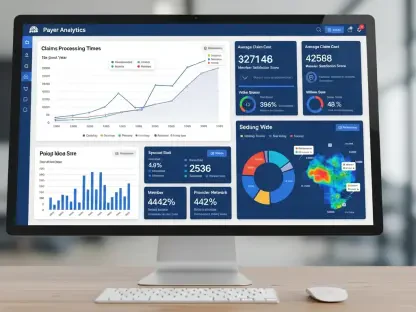A swift sequence of disclosures, market reactions, and legal milestones shaped a clear chronology for investors who bought Molina Healthcare, Inc. (NYSE: MOH) securities in early to mid-2025 and then saw risk details emerge that allegedly cut against prior guidance and cost trend assumptions, making timing and process crucial for anyone considering involvement in the pending class action.
February 5, 2025 — Initial FY 2025 Guidance and Cost Trend Assumptions
The year opened with management issuing fiscal 2025 guidance while outlining expectations for medical cost trends. According to the complaint, the assumptions presented that day did not fully account for adverse facts tied to medical cost inflation and premium adequacy. The allegation framed this first moment as foundational: investors were given a baseline that, in hindsight, proved fragile if utilization rose or rate actions lagged actual costs. The guidance shaped consensus models and sentiment, yet it also created exposure if mechanics of pricing and claims moved out of sync.
March–May 2025 — Signals on Utilization and Premium Adequacy
As the quarter unfolded, attention shifted to utilization in behavioral health, pharmacy, inpatient, and outpatient settings. The suit claims near-term growth had leaned on unusually low utilization, which implied that a reversion toward historical usage could narrow margins quickly. During the same period, early signs of a dislocation between premium rates and medical costs surfaced. That mismatch—premiums not keeping pace with trend—became a central thread. For managed care, even small variance in trend versus price can compress medical margins, so these hints mattered. Analysts parsed commentary for clarity on rate cycles, acuity mix, and pharmacy inflation, while the complaint later pointed to this stretch as the slow turn from optimism to scrutiny.
June 2025 — Emerging Concerns on Medical Cost Trend
By early summer, concerns tightened into a more explicit question: were medical costs running higher than the earlier assumptions implied? The filing asserts that conditions made a reduction to fiscal 2025 guidance substantially likely. In that narrative, optimism about durability of margins was increasingly at odds with observed dynamics in claims and service utilization. The crux lay in timing—how fast management could respond with pricing, contracting, or utilization management changes versus how fast costs were materializing in the claims experience. That timing gap is often decisive in health insurance earnings, and the market began to note it.
July 23, 2025 — Corrective Information Reaches the Market
On or about this date, corrective details allegedly reached investors, clarifying the trajectory of utilization, the misalignment between premiums and medical costs, and the vulnerability of guidance. Plaintiffs claim that the market reaction was negative as risks crystallized and prior narratives on trend and pricing came under strain. This moment marked the alleged inflection when the “true details” entered pricing, drawing a line around which purchases fell within the defined Class Period—February 5 through July 23, 2025, inclusive.
Late July–August 2025 — Share Price Impact and Analyst Commentary
The weeks that followed featured repricing and reassessment. Sell-side and buy-side voices debated the credibility of guidance in light of higher-than-assumed utilization and rising medical cost ratios. Some asked whether dynamics were company-specific or reflective of broader sector pressures. Others focused on how pharmacy trend, behavioral health access, and inpatient intensity could skew cost experience. Debate about sustainability of margins and the degree of prior visibility underscored the complaint’s theme: if assumptions were tight, modest shifts could have outsize financial impact.
Fall 2025 — Class Action Filed and Notice to Investors
A securities class action was filed on behalf of investors who bought during the Class Period and allegedly suffered losses once corrective details arrived. The notice emphasized key investor rights: participation did not require serving as lead plaintiff; representation would occur on a contingency basis; and there would be no upfront fees or expenses. The allegations centered on whether disclosures adequately reflected medical cost trend realities, premium adequacy, and the sensitivity of guidance to utilization levels. As with any securities case, these were allegations, not findings, and ultimate outcomes would depend on evidence and legal standards tested in court.
December 2, 2025 — Lead Plaintiff Motion Deadline
The procedural calendar placed a firm marker on December 2, 2025, as the deadline for investors who sought appointment as lead plaintiff. Those who did not move for leadership could still remain absent class members and share in any potential recovery. The case would proceed regardless of individual lead decisions, with the court weighing factors such as typicality, adequacy, and financial interest in the relief sought when selecting lead.
What Changed and Why It Mattered
Across these milestones, the narrative shifted from guidance confidence to scrutiny of trend assumptions. The early-year presentation established a framework; spring brought signs that utilization and pricing might not align as expected; early summer magnified that possibility; late July injected corrective context that allegedly undercut the prior assumptions and exposed guidance to revision. Themes common in healthcare securities litigation resurfaced: transparency in communicating medical cost trend; guidance that depends on unusually low utilization; and the rapid margin compression that follows modest assumption drift. Open questions persisted about timing, specificity, monitoring of utilization, and sufficiency of risk-factor communication, all of which would bear on materiality, scienter, and loss causation.
What Investors Watched Next
Attention turned to nuance. Regional utilization differences could reveal whether cost pressure concentrated in certain markets. Medicaid redeterminations could influence membership mix and acuity. Competitive pricing responses might affect premium adequacy for future periods, while midyear adjustments—where available—could reduce misalignment. Expert commentary often focused on visibility into trend, pharmacy cost inflation, behavioral health access constraints, and contracting dynamics with providers and PBMs. Emerging practices, such as real-time claims analytics and more conservative in-year pricing resets, were watched as possible tools to better align premiums with evolving costs. Common misconceptions were clarified: filing for lead plaintiff was not required to participate; absent class members could still recover; allegations remained unproven; and contingency structures meant no upfront costs.
Conclusion
By year’s end, the path had been clear: investors who bought during February 5–July 23 tracked the pivot from initial guidance to corrective information, then faced a December 2 leadership decision that set the litigation’s representation. Actionable next steps included documenting trade history within the Class Period, preserving records of losses, and assessing whether to seek lead status based on financial interest and desire to influence strategy. Future considerations involved monitoring filings for detail on medical cost trend monitoring, premium-cost alignment mechanisms, and how utilization management evolved under changing conditions. Those seeking deeper context were best served by reviewing court submissions on materiality and loss causation, comparing peer disclosures for industrywide patterns, and evaluating how pharmacy inflation and behavioral health access might shape trend assumptions in subsequent guidance cycles.









